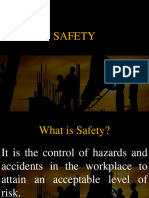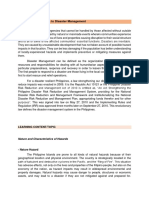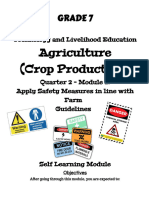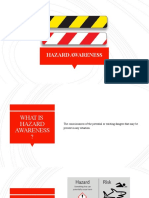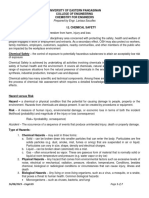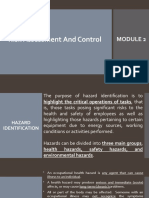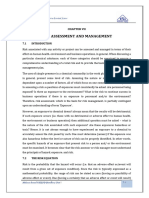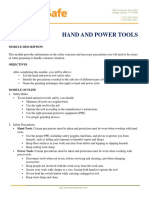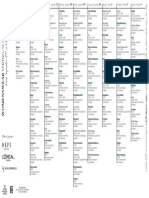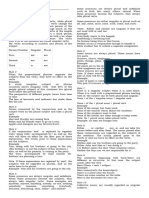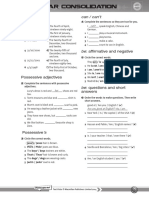I.
INTRODUCTION:
In the textile industry there are a series of processes carried out for thepreparation and finishing of fabrics, which involve risks for those who perform suchtasks.In each of the processes that make up the textile industry, a wide variety of machinery, transport or handling equipment, facilities, raw materials, etc. are used:Machinery and equipment: sewing machines, looms, cutting tables, irons,stamping machines, etc.Tools and equipment: scissors, cutters, blades, measuring tapes, rulers.Facilities: workshops, warehouse, bathrooms, etc.Raw and consumer materials: plant fiber, synthetic fiber, paints, dyes, energy, etc.In a first approximation, when trying to address the issue of risks in the textilesector, it would be related to the material conditions of the work environment(those that are capable of causing damage). But if we take into account thedefinition of health given by the WHO (a state of complete physical, mental andsocial well-being and not merely the absence of damage or illness), we must takeinto account the significant influence on health, in order to ensure that the worker can achieve professional, personal and social development. For this to bepossible, it is necessary to expose some realities present in this sector and thatmay be the origin or sources of danger.Many of the processes that make up the textile industry are quite mechanized andthe intervention of workers is only necessary in the feeding and control operationsof the machinery. The jobs, tools and equipment involved are usually poorlydesigned.The buildings that house these processes, in general, are poorly maintained andpoorly ventilated and have poor cooling, heating and lighting conditions. Storage of flammable materials is often inadequate.In short, the different processes, machines, tools, characteristics of the tasks andforms of organization present in the sector, together with the products used, maketextiles in all their variants, a sector in which a large number of risks can beconcentrated. tested.
II.THEORETICAL FRAMEWORK :


HAZARD IDENTIFICATION AND RISK EVALUATION IN ATEXTILE PLANT
2
II.1WHAT IS MEANT BY DANGER ?
Danger is a condition, source or situation that is characterized by the "visibility of the occurrence of a potentially harmful incident", that is, an event capable of creating damage to protected legal assets. It is an actual or potential condition that may, in some situation or circumstance,cause damage to personnel, material, or degrade the efficiency of an operation.
TYPES OF HAZARDS:a)CHEMICALS:
Chemical substances enter the body mainly by inhalation, absorptionthrough the skin or ingestion. Examples: chemicals, toxic substances,particles. Depending on the production system, various products could beused such as solvents in the production of rayon, cleaning products, dyes,etc.
b)PHYSICAL:
The most important is noise, which has generated a largenumber of workers with hearing damage. Another is vibrations that couldaffect the upper extremities or entire body
.
Examples: Noise, ionizingradiation, lighting, thermal stressors, vibration
.c)BIOLOGICAL:
They are produced by dusts of plant and animal fibers, suchas cotton and wool of animal origin, with respiratory tract conditions beingthe most common (such as Byssinosis, a lung disease caused by cotton).The presence of arachnids, insects or mice, microbiological organisms, canalso be biological risks.
d)ERGONOMICS:
Many work situations that require greater physical-muscular effort, which can cause musculoskeletal injuries due to repetitivemovements. Examples: restricted space, repetitive movements,inappropriate postures, lifting loads, overexertion, etc.
e)MECHANICAL:
are those caused by the moving elements (blades,carriages, etc.) of the machine, by the transmission elements (axles,
HAZARD IDENTIFICATION AND RISK EVALUATION IN ATEXTILE PLANT
3
pulleys, etc.), by projection of machine elements as a result of their breakage and by projection of the worked material. Examples: machinerywithout guards, defective tools, vehicles in poor condition, boilers withoutmaintenance.
f)ELECTRICAL:
electric shock or burns due to contact with live parts (directcontacts), accidentally live parts (indirect contacts), or inadequateinsulation.
g)THERMAL:
burns from contact with hot objects or materials.h)
PHYSICAL-CHEMICAL:
are all those where physical phenomena such asheat and chemical phenomena such as reactions between fuels andoxidizers, or rapid oxidation of some substances or materials, occur at thesame time, which can result in fires or explosions.
II.2WHAT IS MEANT BY RISK ?
It is the possibility of damage or loss, which includes the probability of occurrenceand severity of the consequences of the damage or loss.The word risk has always been associated with danger, that is, any property,condition or circumstance in which an element, product, substance, installation or process can cause direct damage to the quantity or quality of a natural resource,ecosystem or landscape. or indirect damage to human beings or material assetsas a consequence of the above. To identify a certain risk it is necessary to know:
The sources of risk present
Risk identifiers
The effects or consequence of the risk
RISK =PROBABILITY x DAMAGE
HAZARD IDENTIFICATION AND RISK EVALUATION IN ATEXTILE PLANT
4
a)THE SOURCES OF PRESENT RISK:
These are the legal or juridicalbackground, reports, studies, investigations, diagnoses that havebeen given or issued to demonstrate the presence of a risk.
b)RISK INDICATORS
: They indicate how and where the risk sourcesact under normal conditions.
c)THE EFFECTS OR CONSEQUENCE OF THE RISK:
are thenegative impacts, damages or harm that failure to address a risk cancause to man, the natural environment, natural resources or property.
II.3GENERAL RISK ASSESSMENT
Risk assessment is one of the steps used in a risk management process. Risk isevaluated by measuring the two parameters that determine it, the magnitude of thepossible loss or damage, and the probability that said loss or damage will occur.Risk assessment is probably the most important step in a risk managementprocess, and also the most difficult and error-prone step. Once risks have beenidentified and evaluated, the subsequent steps to prevent them from occurring,protect against them or mitigate their consequences are much moreprogrammatic. A general risk assessment process is made up of the following stages:
a.Classification of work activities
A preliminary step to risk assessment is to prepare a list of work activities,grouping them in a rational and manageable way. A possible way to classifywork activities is as follows:
Areas outside the company facilities.
Stages in the production process or a service.
Planned and maintenance work.
Defined tasks, for example: forklift drivers.



















